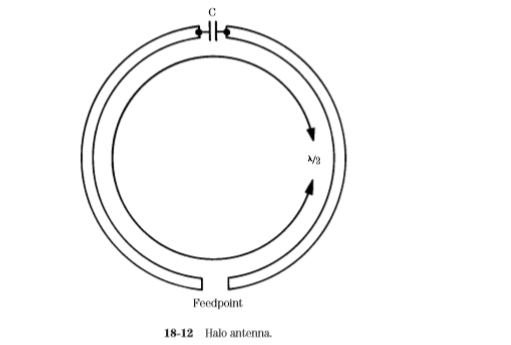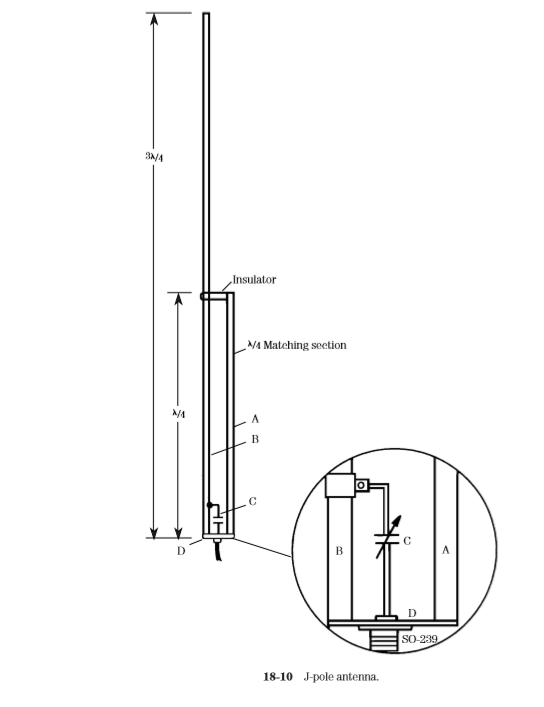The quad antenna was introduced in the chapter on beams. It is, nonetheless, also emerging as a very good VHF/UHF antenna. It should go without saying that the antenna is a lot easier to construct at VHF/UHF frequencies than it is at HF frequencies! Figure 18-13 shows a modest example.
There are several methods for building the quad antenna, and Fig. 18-13 represents only one of them. The radiator element can be any of several materials, including heavy solid wire (no. 8 to no. 12), tubing, or metal rods. The overall lengths of the elements are given by:
There are several alternatives for making the supports for the radiator. Because of the lightweight construction, almost any method can be adapted for this purpose.
In the case shown in Fig. 18-13, the spreaders are made from either 1-in furring strips, trim strips, or (at above 2 m) even wooden paint stirring sticks. The sticks are cut to length, and then half-notched in the center (Fig. 18-13, detail B).
The two spreaders for each element are joined together at right angles and glued (Fig. 18-13, detail C). The spreaders can be fastened to the wooden boom at points S in detail C. The usual rules regarding element spacing (0.15 to 0.31 wavelength) are followed.
See the information on quad antennas in Chap. 12 for further details. Quads have been successfully built for all amateur bands up to 1296 MHz.
Reference : Practical Antenna Handbook - Joseph P. Carr







